F 321 – Assignment #6
Systematic Sampling, Competition Indices, and Scaling,
Objective: This assignment will ask you to utilize the concepts of systematic sampling while mastering your quantitative skills in describing confidence about population parameters. You will also begin working with concepts of forest competition and systems for scaling forest products.
Student Learning Outcomes: Upon completing this assignment you should be able to:
- Determine and calculate strategies for systematically sampling a forest population.
- Describe the relationship between sampling unit, sample intensity, and sample spacing.
- Calculate common forest competition indices.
- Analyze and describe overrun/underrun in forest product scaling.
1. How are forest populations typically arranged in a landscape? What leads to this arrangement?
2. What do semi-variograms tell us about the relationship between your plots?
3. Why are systematic samples often implemented in forestry instead of a random sampling? What assumptions must we make about systematic sampling to apply the statistics of simple random sampling?
4. What do we look for in site trees for assessing a stand’s site index?
5. You have been assigned to design a systematic continuing forest inventory sampling protocol for monitoring timber volume and present it to your boss. The only guidance he gives you is that there are 46,000 acres to inventory, you need a sampling intensity of 0.5% of the acreage, and he would like plot remeasured every 5 years. You decide to give options of different size fixed radius plots, complete the table below in chains.
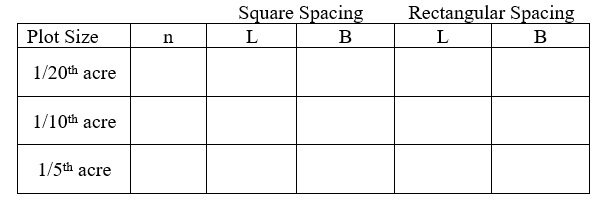
6. Your boss in Question # 5 then asked you to pick and defend which plot size, sample size, and spacing, you would choose? Remember to consider both efficiency and statistical validity in your decision.
7. From the following preliminary cruise statistics, determine how many plots you would need in order to estimate the mean volume per acre within the stand to within 9%, at 90% certainty. Assume the stand is infinitely large.
Mean = 900 cu ft/ acre plots = 3 1/20th acre standard deviation = 210 cu ft/ acre
8. You have a 75 acre stand that you inventory and obtain the following plot summaries. If you sell the stand for $320 / mbf, with 95% certainty what is the maximum gross revenue you would expect to receive?
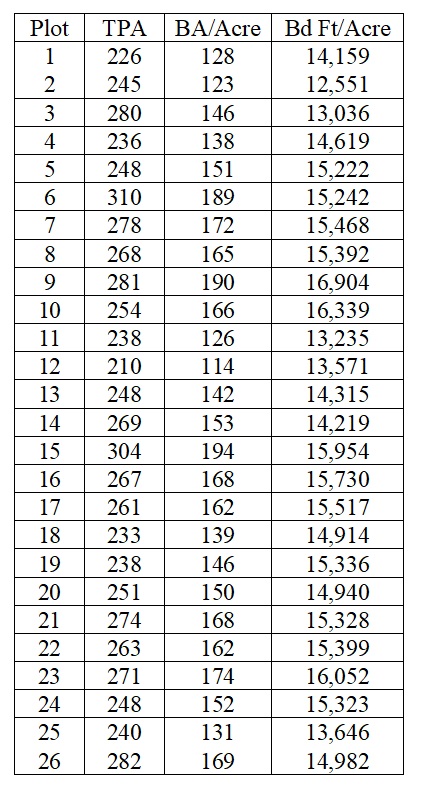
9. Using the computed cu ft volume per plot provided from a cruise of 1/10 acre plots, calculate the sampling intensity for each strata and the combined mean and variance per acre, assuming sampling with replacement. Does this seem to be a good stratification of the population?
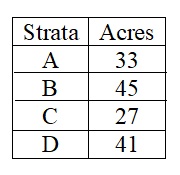
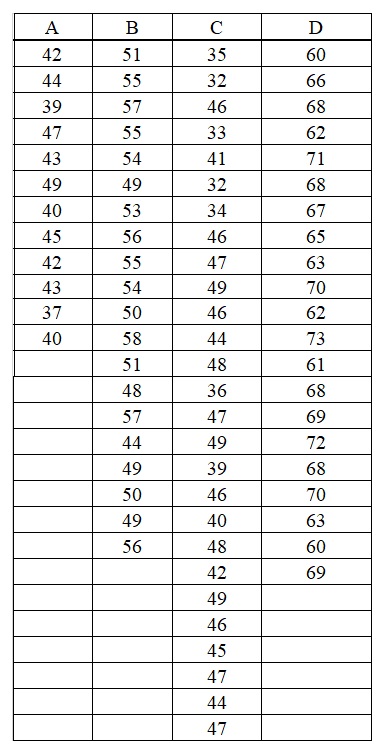
10. You are working at a mill that assesses the value of weight scaled truckloads by applying the conversion 5.92 tons per 1 mbf. On a given timber sale you stick scale (board feet) 25% of all truckloads and weigh every truckload, this sale has just ended and it is your job post correct the load weights to ensure you did not overpay. You will need to create a regression relationship between the scaled subsample and truckload weights, then apply the regression equation to calculate what the volume should have been for the truckloads that were only weighed. If you pay $285 per mbf of wood in a truckload, calculate the amount that was either over or under paid for the sale. Who made out better, the mill or the loggers? and why?
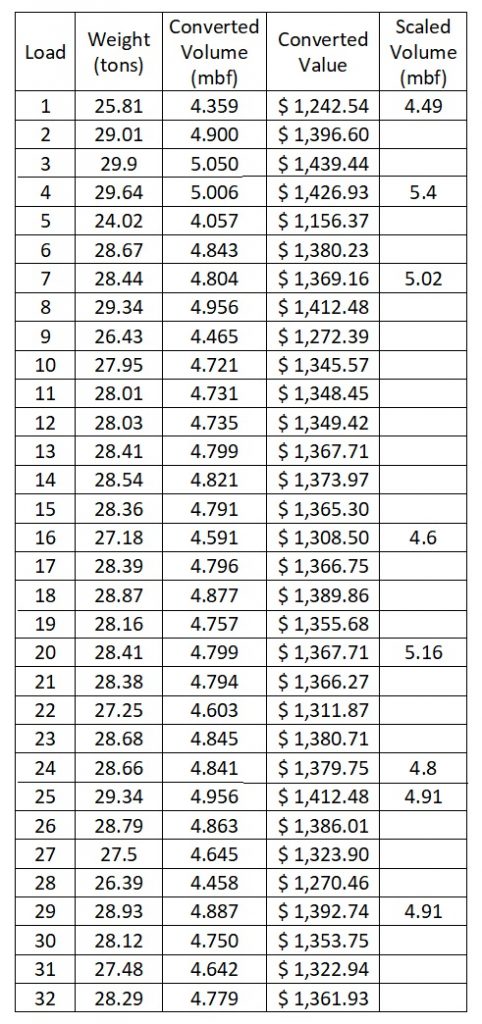
11. Calculate the stocking level for a 1/10 acre Douglas-fir (Pseudotsuga menziesii) plot with a maximum SDI=595 and the following plot data.
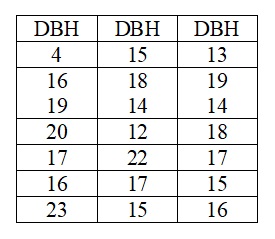
12. Calculate the relative spacing for the following stands:
a) 285 trees per acre; mean height 78 feet
b) 650 trees per acre; mean height 38 feet
c) 145 trees per acre; mean height 122 feet
d) 240 trees per acre; mean height 95 feet
